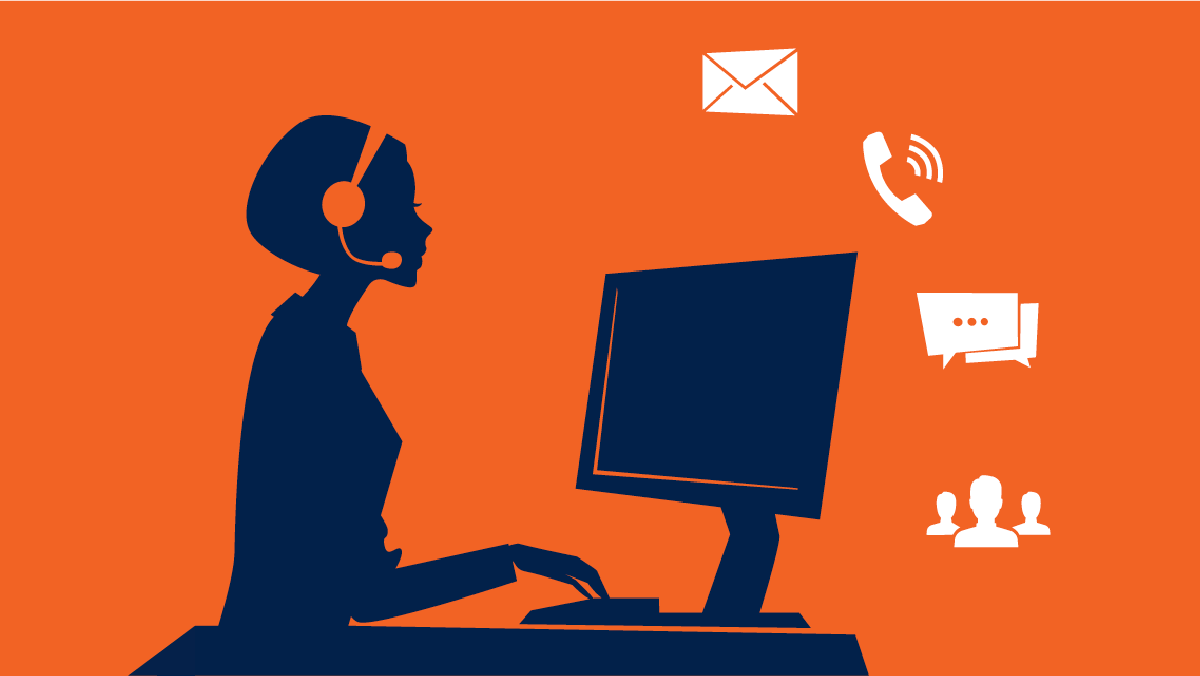Email was one of the first digital channel used for customer care. At first, it was used for personal purposes, but companies have been progressively adopting it for customer service. Messaging now follows the same trend. Despite the growth of this new communication channel, email holds a major part in customer interactions: according to Teleperformance, it is still used by 38% of customers.
It is still necessary for companies to remain available on this channel, while deploying the new ones appreciated by customers, such as messaging and social media. In order to develop an omni-digital customer care, centralizing emails’ handling with other channels’ management becomes essential to optimize your activity, manage peaks and accompany the growth of other channels.
Emailing is still as popular among users:
In its latest study; Teleperformance reveals a decrease in the number of customers using email to contact companies: it went from 43% in 2016 to 38% in 2017. This cutback can be explained by the growth of other channels such as mobile apps, messaging and chat.
However, this figure also reveals that email remains used by a large proportion of customers. This interaction mode does have several advantages:
- The ability to explain a problem or request in more details than on other channels since the number of characters is not limited
- Can be used by customers not present on social or messaging channels
- A more official value than other channels
Although customers expect faster answers to their emails than before, the response rate remains longer than on other channels: 80% of them expect an answer within 24 hours. This leaves companies more time to process emails than messages from other channels, on which the norm are answers within a few hours or instantaneously.
Compared to these channels, email has a few limits :
- A more formal layout to follow, increasing handling time, whereas this isn’t an issue with messaging or chat
- Difficulties to attain the resolution of problems requiring several messages
Email: an essential element of Omni-Digital Customer Care
According to the consulting firm Accenture, 58% of customers are frustrated by incoherent experiences across channels and 89% are frustrated by having to repeat themselves. Customers want to be able to choose which channel they use to contact a company. And so companies must increase and diversify the touch points they offer their customer base to provide seamless Omni-Digital Customer Care.
According to another study, the rate of customers who are willing to promote a brand to their relatives and friends grows with the increase of number of channels available, this will improve the Net Promoter Score (NPS). This score jumps from 31% with one channel to 71% with 8 or more channels.
This shows emailing is an essential channel that companies need to implement and control alongside other channels like social media and messaging to increase customers’ satisfaction who will then become ambassadors of this brand to their acquaintances.
Why you should integrate email with your other channels
Given the spread of digital customer relationship channels, centralizing their management is essential. Instead of relying on different tools and creating silos between teams that are organized by channel, it is possible to assemble the management of all channels.
This approach has several advantages:
- Harmonizing your processes by organizing your agents by skills and not by channels: when you rely on a single tool, all your agents can answer on all the digital channels. It is even possible to organize them by skills (technical questions, billing questions etc …) or language. The channel used becomes a secondary issue: whether the request arrives by email, chat or email, it can be routed efficiently to the right person.
- Smoothing activity across channels: another benefit of this organization is to better distribute the activity across all channels used. For example, during a peak of activity on a specific channel, all agents will be able to deal with this large volume.
- Getting a 360° view of the customer: a complete view of conversations allows agents to have access to interactions across all channels and to respond more effectively.
- Adapting to the growth of new channels: this was the case in 2016 with Messenger for companies, GAFAs unveil their investment projects for customer relations: WhatsApp for businesses, Apple Business Chat, Amazon Anytime … When these channels are launched, a delay is necessary before customers adopt them and volumes of interactions increase. By implementing a centralized management, that includes email, agents can continue to respond on all channels while dealing with messages from this new channel. This way, companies can be pioneers on the latest channels that are available, while remaining available on their current channels.
ENGIE, the second electricity supplier in France, has recently chosen RingCentral Engage to handle their Customer Relations on Messenger, chat, and email. By integrating these three channels, the company gives its 3 000 agents more flexibility and reactivity.
By integrating emailing, ENGIE can encourage the growth of messages on Messenger, encouraged by its 2 chatbots, while dealing with large volumes of interactions.
Omni-Digital implies that the channel used becomes a secondary issue: customers want to see their problem solved on their preferred channel. This means that companies must be able to offer the same quality of service on all channels.
To remedy this, you must use a solution that enables you to process emails efficiently to optimize your activity and meet customers’ expectations and uses while continuing to promote the growth of new channels.
Originally published Jun 11, 2018, updated Dec 30, 2022





